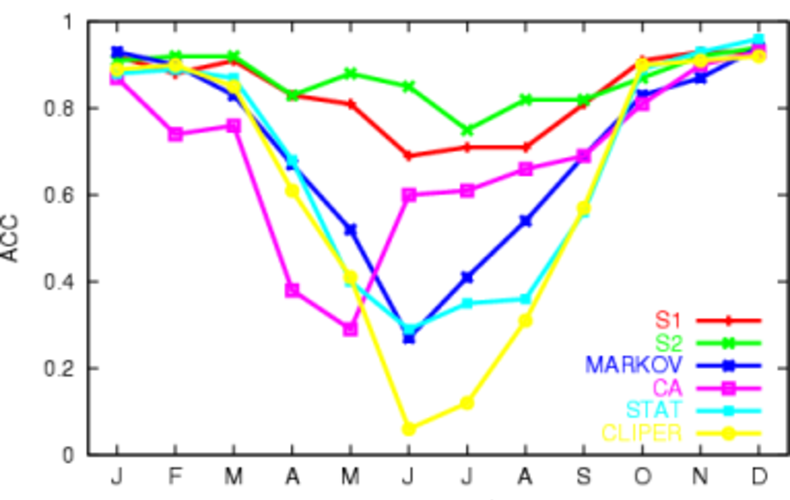
The European Centre for Medium-Range Weather Forecasts (ECMWF) has made seasonal forecasts since 1997 with ensembles of a coupled ocean-atmosphere model (S1). In January 2002, a new version (S2) was introduced. For the calibration of these models, hindcasts have been performed starting in 1987, so that 15 years of hindcasts and forecasts are now available for verification.
Seasonal predictability is to a large extent due to the El Niño - Southern Oscillation (ENSO) climate oscillations. ENSO predictions of the ECMWF models are compared with those of statistical models, some of which are used operationally. The relative skill depends strongly on the season. The dynamical models are better at forecasting the onset of El Niño or La Niña in boreal spring to summer. The statistical models are comparable at predicting the evolution of an event in boreal fall and winter.
GJ van Oldenborgh, MA Balmaseda, L Ferranti, TN Stockdale, DLT Anderson. Did the ECMWF seasonal forecast model outperform statistical ENSO forecast models over the last 15 years?
Status: published, Journal: J. Climate, Volume: 18, Year: 2005, First page: 3240, Last page: 3249, doi: 10.1175/JCLI3420.1